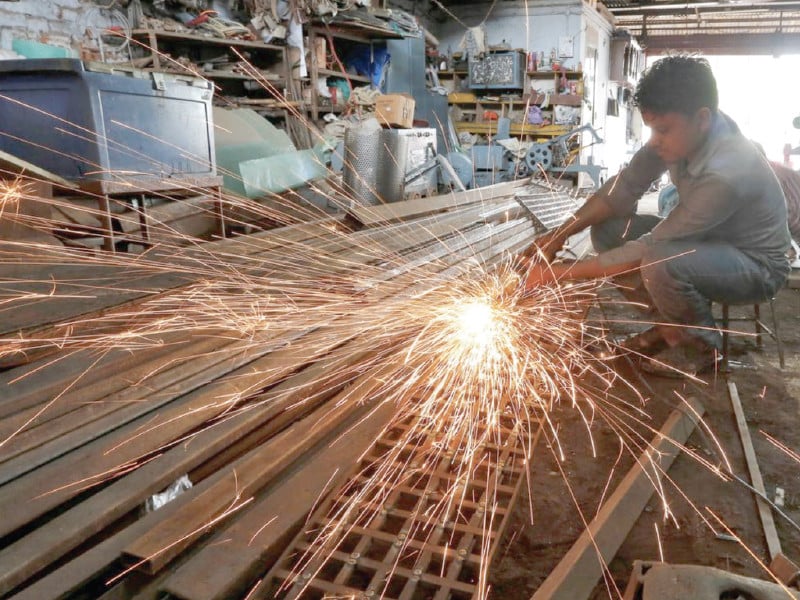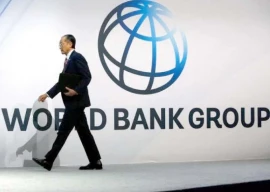
China – the second-largest global economy – has officially launched “new quality productive forces” early this month to pursue high-quality development, aimed at further accelerating its economic output through deploying latest innovations and technologies where quality will take centre stage in all fields of life.
The tech advancement is expected to help introduce new industries and foster the global economy, as the share of Beijing in the world economy stood at 30% in 2023. It has been connected with around 150 nations through its aggressive Belt and Road Initiative (BRI).
The quality productive forces are expected to further expand the influence of China, enabling it to challenge and change the world order, and give a tough time to competitors such as the US and India. Also, it has a lot to offer to its friends like Pakistan to spur growth.
Talking to The Express Tribune, China International Press Communication Centre Research and Media Fellow Muhammad Zamir Assadi said the new quality productive forces comprised cloud computing, Big Data, 5G advance internet, robotics, Internet of Things, high-end manufacturing and artificial intelligence.
Beijing is going to increasingly deploy innovative techniques and advanced technology, as it believes that conventional and traditional productive models have become obsolete with partial failure to perform during the Covid-19 pandemic. He said such productive forces had already become the driving force in the Chinese economy, but “this time around the focus is on quality along with quantity”. The adoption of the new model will gradually accelerate instead of coming into force overnight.
He elaborated that China had set an ambitious agenda through presenting the “Government Work Report 2024” at the annual legislators’ meeting of its two houses (parliament) held in the early days of March. Every year, the annual meeting reviews progress on plans presented last year and sets new-year agenda. The week-long meeting takes up all sectors one by one including the economy, foreign policy and social areas like healthcare and education.
Read China ready to promote quality development of CPEC
This year, President Xi Jinping has launched the new quality productive forces in pursuance of high-quality development. Assadi said China achieved economic growth of 5.2% (worth 126 trillion yuan) in 2023 compared to average 7% growth in years before the pandemic and lockdowns in late 2019.
The Government Work Report has set the GDP growth target at 5% for the current year. Average growth will remain around 5% over the next four to five years, as the world is still recovering from shocks of the pandemic including high inflation. He dismissed fears that the introduction of high-quality forces would increase the cost of production and the rate of unemployment in China.
Assadi contended that the government of President Xi had remained cautious that the cost of production should not go up while applying new forces and the job market continued to flourish. The inflation measured by the monthly Consumer Price Index (CPI) remained moderate at 3% in 2023 and it is estimated to stand at low levels this year and in the future.
He said the Chinese government had targeted to create 12 million new urban jobs in 2024, indicating that the new forces would provide employment opportunities instead of rendering people jobless. In addition, the unemployment rate has got better at 5.5%, which is lower than those in Europe and the US.
Chinadaily.com reported that the concept of new quality productive forces, first coined by Xi in 2023 during an inspection in the northeast Heilongjiang province, was highlighted at a key meeting last December and became the subject of a group study session of the Communist Party of China leadership earlier this year.
In this year’s top legislature meeting, the concept dominated policy discussions in many areas and was placed as a top priority in the Government Work Report.
The Associated Press of Pakistan (APP) reports that the term refers to new productive forces that emerge from continuous advances in science and technology, driving strategic future and emerging industries that could introduce breakthrough technological advancements in the era of intelligent information. Xi underscored the importance of leveraging new technologies to upgrade traditional industries and promote the high-end, intelligent and green transformation of industrial units, it said.
Assadi emphasised that the new forces of quality productivity would benefit the entire world, particularly those connected with Beijing through BRI like Pakistan, and revolutionise global growth, which had remained sluggish since the pandemic. “When China grows, the world grows and when the Chinese economy moves, the world economy moves,” he remarked.
The research and media fellow defended China, saying that it never claimed it was going to challenge the world order and had ambitions to become the superpower by achieving the title of largest economy. However, it has kept on modernising its industries and productive forces and has continued to grow since the introduction of reforms and opening up of the economy in 1978.
The high quantitative productive model (now high-quality productive model) has improved lives of 800 million people in China, bringing them above the poverty line over the past 40 years. It aggressively increased the per capita income and the purchasing power of people.
Such developments have divided the US public and private sector companies, encouraging the latter to set up businesses in China in search for the right market and right customers for their products.
World’s largest tech company Apple, based in the US, has very recently opened mega outlets in Shanghai as it believes the country, having 1.4 billion population, has the right consumers with a high purchasing power.
He was of the view that the Indian economy would never supersede China’s as a large part of population of the former still lives below the poverty line, sleeps at the roadside and many have no access to toilets.
He, however, stressed that Pakistan could learn a lot from the Chinese growth models and experiences, and lift its economy to new highs, as Beijing has always remained supportive of Islamabad.
China can assist Pakistan at length to fix the agriculture sector in line with its own efforts that lifted millions of people from below the poverty line in the recent past. Pakistan may also welcome the ageing industries of China to ramp up exports.
China has already invested around $30 billion in the past 10 years under the China-Pakistan Economic Corridor (CPEC) by setting up 8,000 megawatts of electricity generation plants, which helped address load-shedding and brought production activities back to normal in industries.
The writer is a staff correspondent
Published in The Express Tribune, March 25th, 2024.
Like Business on Facebook, follow @TribuneBiz on Twitter to stay informed and join in the conversation.

1732013245-0/now-you-see-me-(1)1732013245-0-405x300.webp)
1730959638-0/trump-(19)1730959638-0-165x106.webp)


















COMMENTS
Comments are moderated and generally will be posted if they are on-topic and not abusive.
For more information, please see our Comments FAQ